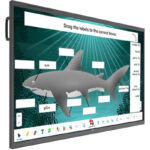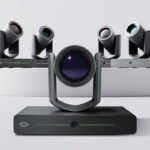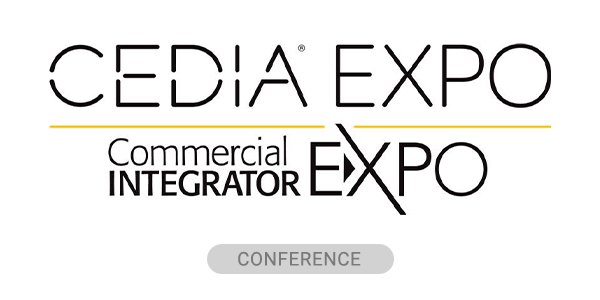Cutting-edge experiential AV projects, as implemented in museums and heritage sites, are critical for increasing their appeal and engagement among today’s consumers who have grown up with all forms of video, gaming and interactive media.
Complex and highly detailed exhibits require the extra firepower of experiential AV to capture consumers’ attention — but not every solution requires the use of extravagant AV. For instance, you don’t need to deploy a computer when all that is needed is for visitors to touch a screen to play a video. That’s technically classified as interactive, but it’s really interactive signage application. On the other hand, for those exhibits that cry out for a more intricate solution, like a museum that encourages visitors to use a touchscreen to select and combine multiple body parts from different animals to create a new species, more processing power by way of a PC would be necessary.
Recognizing the true application of the design is key and will make a significant difference as museums are often not-for-profit enterprises on very tight budgets.
How Museums Can Drive AV Innovation
The vast majority of AV innovation in these settings pertains to the sharing of a lot more information via touch panels than you can achieve on an analog or printed plaque. Currently there are production companies that specialize in interactive museum exhibits and incorporate software typically used for video games, to create impressive interactive exhibits. For example, the Adirondack Museum in upstate New York offers visitors an experience where they can use sticks to “push” logs down the river. Here, the video game software reads the ground below the projector to see where visitors are pushing the logs to provide accurate feedback to the experience.
Achieve Balance of Content & Technology
While museum curators understand the value of incorporating technology, they have to strike a balance with the sensitivity of the subject matter they are sharing with visitors. This balance was struck perfectly at the National Museum of the United States Army. In this case, administrators allowed technology to enhance experiences without detracting from the respect that must be afforded to our nation’s fallen heroes. They didn’t want interactive exhibits to come off as video games with visitors missing the educational value.
AV can be used for a group of associated museums or heritage attractions to promote and create awareness of additional offerings to a captive audience. A case in point is The Smithsonian Museum in Washington, D.C., which often uses digital signage in its various museums to reference other institutions in its group — helping to keep visitors’ focus on museums and heritage sites within the institution. This is important as these entities compete with a wide range of other diversions and attractions including amusement parks, movie theaters and sporting events.
Also Read: CI Exclusive: Kramer & ZeeVee on Benefits of Recent Acquisition
Ensuring Systems that Last
As for challenges in addressing the museum and heritage site AV market, integrators must be aware that these venues require AV systems that are robust and will be reliable over an extended period of time. Because of this, they are going to buy not only high-end and high-grade equipment, but they’re also going to buy the latest high-end and high-grade technology to the extent their budgets allow. Hardware and software solutions that need to be repeatedly replaced are non-starters as they are a costly drain of resources in terms of time and money.
Major institutions may have big budgets when it’s time to buy, but that’s normally a one-and-done budget. They don’t have room for change orders or scope of work creep. The budget that is agreed on at the outset is the budget they have and that’s it.
While the museum and heritage site AV market is strong and AV budgets can flirt with and even exceed the million-dollar mark, it is important to understand that it is not a business you go into for repeat customers. They’re going to have five-, eight- or 10-year tech refresh cycles. So, the budgets may be big, but the projects are put in motion just once or twice a decade. Many museums get their money from federal, state and local government budgets, so museum officials need to set aside funds until they have sufficient savings for a major refresh.
Concluding Thoughts
Challenges aside, museums and heritage attractions are often multifaceted AV projects that come with prestige and pride in knowing that millions of people each year will see your handiwork. For design engineers and system engineers, museums are rewarding projects because they depend on singular experiential AV elements; they’re not copy-and-paste AV projects.
Every museum is going to have a unique perspective that it wishes to address. While these particular customers dictate 70% of the solution they are seeking, the integrator gets the opportunity to bring in custom elements for the remaining 30% that the end user may not have even known were possible. That’s the fun and rewarding part of this niche market!
Tony Torres is integration engineer at Kramer – ZeeVee.










